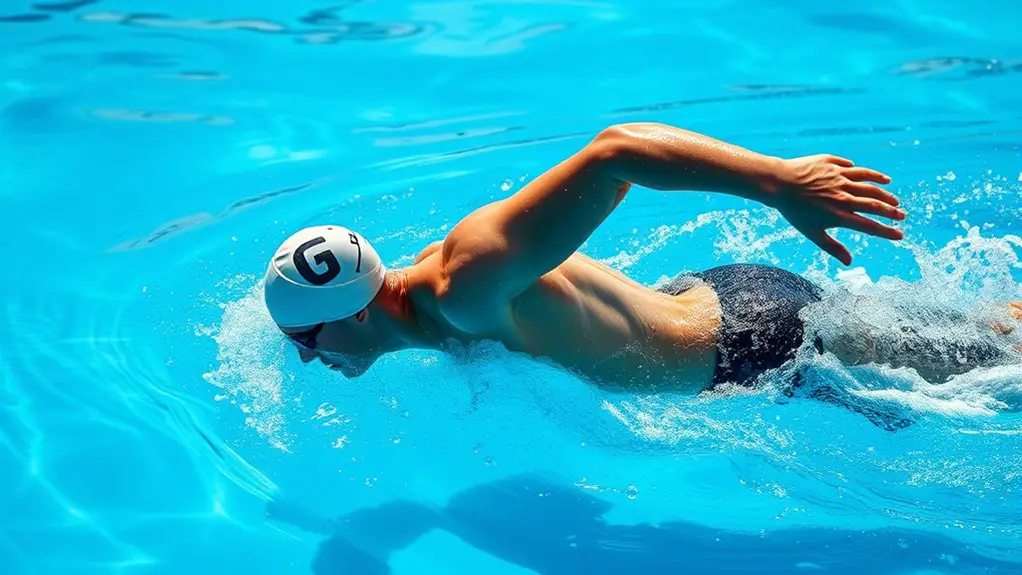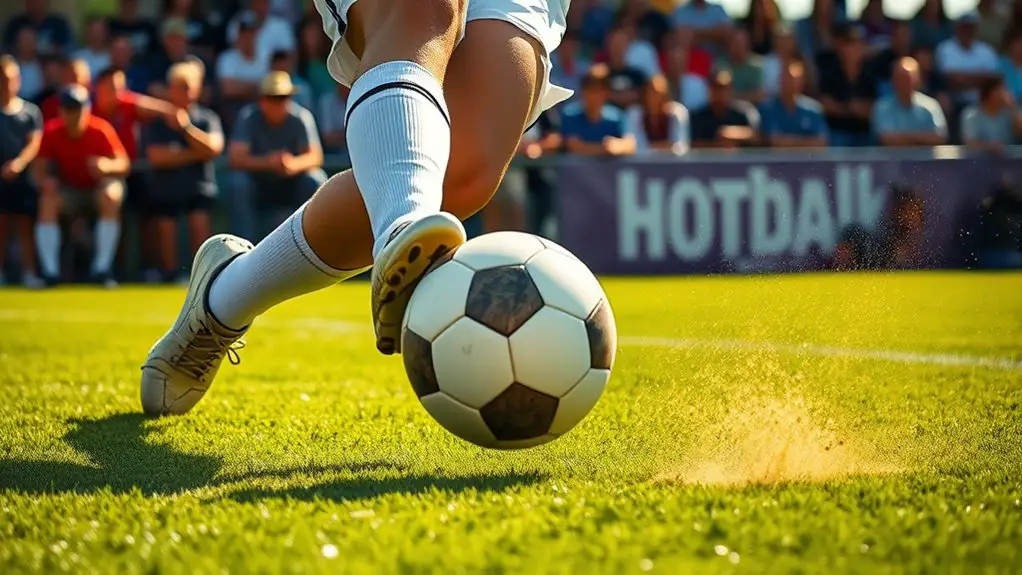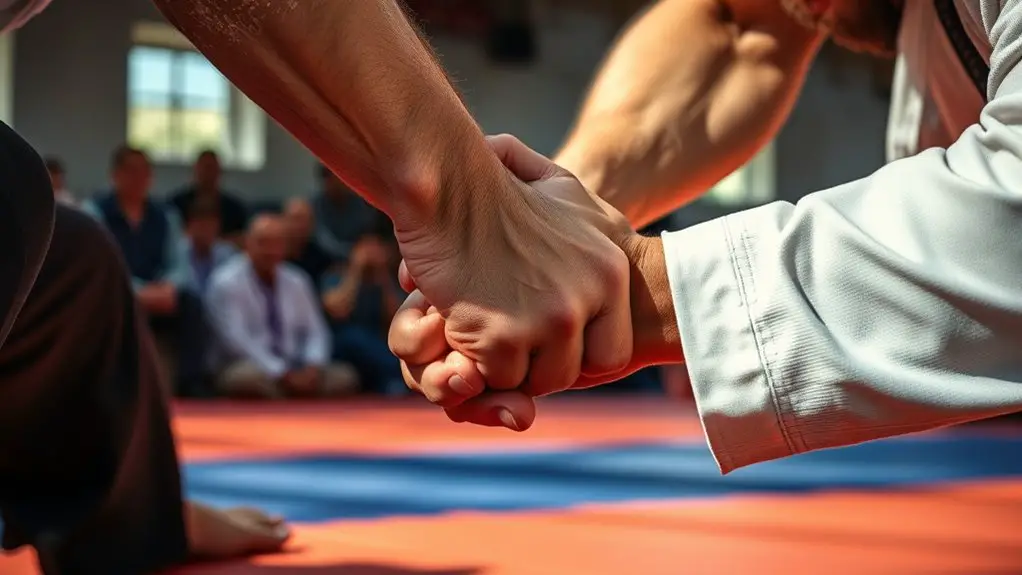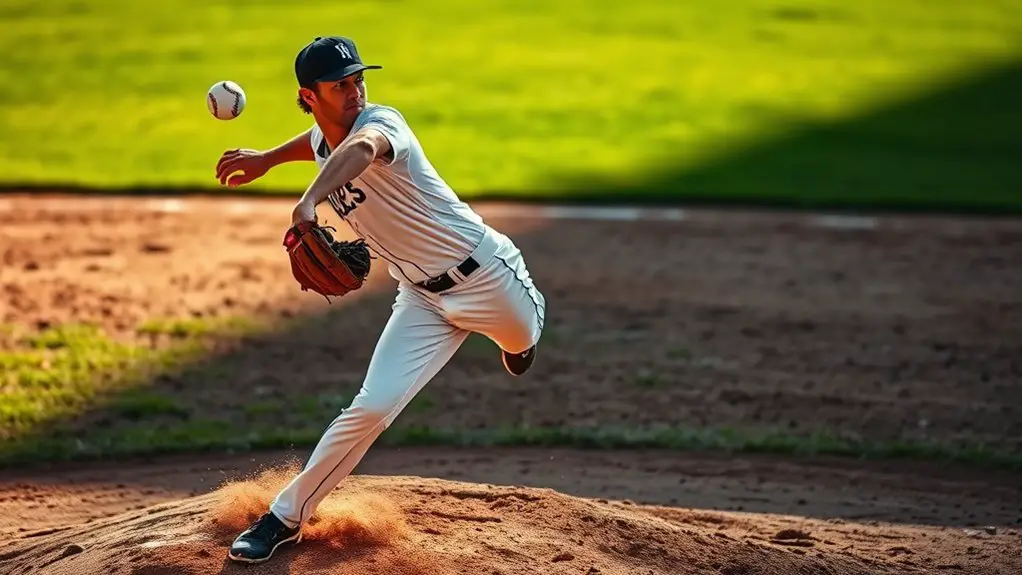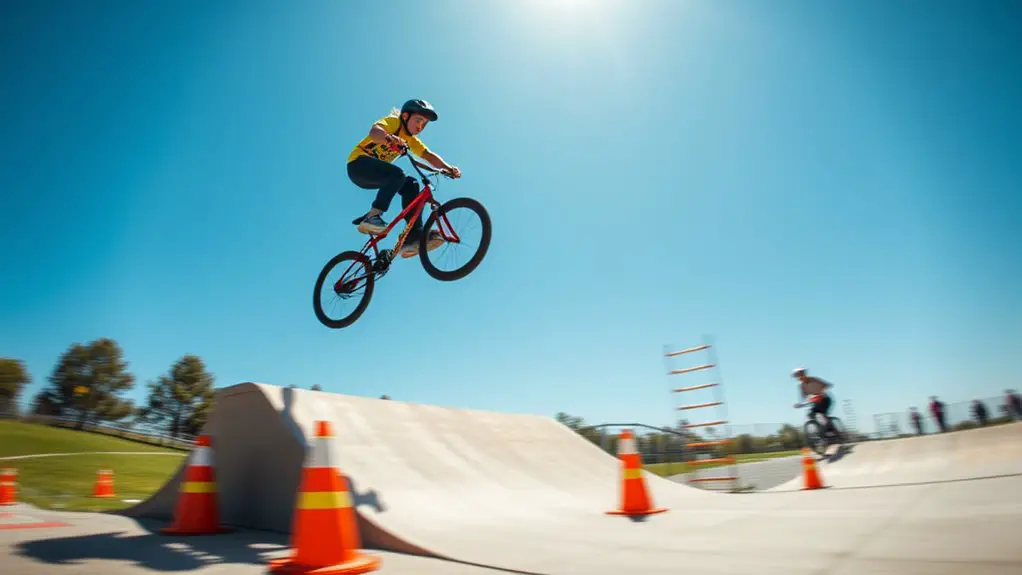To develop more powerful strokes for speed, focus on your body positioning and stroke mechanics. Keep your head, hips, and feet aligned to reduce drag. Use core strength to maintain balance in the water. Integrate your breathing patterns with your strokes for better efficiency. Incorporate strength training to boost muscle power, and practice specific drills to enhance stroke power. Following these tips will greatly improve your performance, and there's much more you can explore to refine your technique.
Understanding Body Positioning in the Water
When you plunge into the water, you might not realize how essential body positioning is for speed. Your body alignment plays a vital role in creating minimal drag, allowing you to glide effortlessly. To achieve this, keep your head, hips, and feet in a straight line, maximizing your streamlined shape. Think of your body as an arrow slicing through the water.
Finding your water balance is key. If your legs sink too low, it'll slow you down, while a too-high position can disrupt your flow. Focus on engaging your core to maintain that perfect balance, allowing your arms to move freely without excess resistance. A strong core is crucial for enhancing stability and balance, enabling you to maintain control in the water and optimize your stroke efficiency.
Mastering Stroke Mechanics
Maintaining the right body positioning sets the stage for mastering stroke mechanics. Once you've got that down, focus on your stroke rhythm. A consistent rhythm allows you to glide through water effortlessly, giving you the freedom you crave. Think of your strokes as an extension of your body—fluid and natural.
Your breathing patterns also play an essential role. When you breathe in sync with your strokes, you enhance your overall efficiency. Try to develop a pattern that feels comfortable; this will help you maintain energy and avoid feeling rushed.
Practice integrating your strokes and breaths, letting them flow together. This harmony creates a powerful connection with the water, allowing you to swim faster and smoother. As you refine these mechanics, you'll find your strokes becoming more powerful, propelling you forward with ease. Core strength is crucial for enhancing your overall stability and power in the water. Embrace this journey, and soon you'll experience swimming like never before!
Enhancing Propulsion Through Technique
To enhance your propulsion, it's essential to focus on your body positioning, core strength, and stroke technique. Each element plays a significant role in maximizing your speed and efficiency in the water. By refining these aspects, you'll notice a marked improvement in your overall performance. Additionally, incorporating mobility training can further enhance your flexibility and range of motion, leading to more powerful strokes.
Optimize Body Positioning
Enhancing your body positioning in the water is essential for improving propulsion and speed. When you achieve the right body alignment and maintain ideal water balance, you'll feel more freedom in your strokes. Here are four tips to help you improve your body positioning:
- Streamline Your Body: Keep your body as flat as possible to reduce drag.
- Engage Your Core: Use your core to maintain stability and support your body alignment.
- Head Position: Keep your head neutral, looking slightly forward to promote a streamlined posture.
- Leg Positioning: Position your legs just below the water's surface to maintain balance without excessive kicking.
Strengthen Core Muscles
Achieving the right body positioning lays the groundwork for effective propulsion, but strengthening your core muscles takes your technique to the next level. Core stability is essential for maintaining balance and control while you stroke through the water. When your core is engaged, you'll harness more power from each movement, allowing you to glide with freedom and efficiency. Incorporate exercises like planks and Russian twists into your routine to build that core strength. As you strengthen your muscles, you'll feel more connected to your body, enhancing your propulsion with every stroke. Remember, a powerful stroke isn't just about your arms—it's about the solid foundation your core provides. Embrace this journey, and watch your speed soar!
Refine Stroke Technique
Mastering your stroke technique can greatly enhance your propulsion in the water. By focusing on stroke efficiency and understanding fluid dynamics, you can cut through the water with ease. Here are four key elements to refine your stroke:
- Body Position: Keep your body streamlined to reduce drag.
- Arm Entry: Aim for a smooth entry to maximize propulsion from the start.
- Pull Technique: Engage your whole arm during the pull phase for better power.
- Breathing Rhythm: Coordinate your breathing with your stroke for a consistent flow.
Incorporating Strength Training
While many swimmers focus solely on technique and endurance, incorporating strength training into your routine can greatly enhance your speed in the water. By integrating strength exercises, you'll not only build muscle but also improve your overall power output. Think about it: stronger muscles translate to more forceful strokes, allowing you to glide through the water with less effort.
Consider adding weightlifting or resistance training to your weekly schedule. Target key muscle groups like your core, shoulders, and legs, as they play significant roles in your swimming performance. Exercises like squats, deadlifts, and bench presses can boost your strength, while also enhancing your explosiveness in the pool. Additionally, incorporating Olympic lifts can significantly improve your coordination and timing, which are essential for effective strokes.
Don't forget to balance your strength training with swimming practices. This combination fosters a holistic approach, ensuring you gain the freedom of speed without sacrificing technique. Embrace strength training, and watch your strokes transform into powerful, swift movements.
Practicing Drills for Stroke Power
To boost your stroke power, you'll want to focus on specific drills that target key movements. Incorporating resistance training techniques can also enhance your strength and explosiveness in the water. Additionally, developing functional strength through compound movements will significantly contribute to your overall stroke performance. Let's explore effective drills that can elevate your performance and help you achieve faster strokes.
Resistance Training Techniques
Incorporating resistance training techniques into your practice can greatly enhance your stroke power. By focusing on strength and explosive movements, you'll develop the functional strength needed for powerful strokes. Here are some effective techniques to evaluate:
- Resistance Bands: Use bands for dynamic warm-ups and resistance during strokes, enhancing your core stability.
- Weight Lifting: Incorporate compound lifts to boost overall strength endurance, targeting muscles essential for swimming.
- Plyometric Exercises: Engage in explosive movements like box jumps to improve your power training.
- Underwater Resistance: Practice interval workouts with added resistance, simulating real swim conditions and increasing stroke efficiency.
Specific Stroke Drills
Practicing specific stroke drills is essential for building power and efficiency in the water. By incorporating drill variations into your routine, you'll not only enhance your stroke efficiency but also reveal your full potential as a swimmer. Focus on drills like catch-up freestyle and one-arm strokes to isolate and strengthen different aspects of your technique. Experiment with different tempos and resistance tools, like paddles or bands, to challenge yourself and build muscle memory. Don't shy away from mixing things up; the more diverse your drills, the more adaptable you'll become. Remember, it's not just about speed—it's about mastering your strokes and enjoying the freedom of movement in the water. Embrace these drills, and watch your power soar!
Tracking Progress and Making Adjustments
As you commence your journey to enhance your swimming speed, tracking your progress becomes essential for identifying areas that need improvement. Regular progress evaluation helps you understand what's working and what's not. Here are four effective adjustment strategies to contemplate:
Tracking your progress is crucial for improving swimming speed; regular evaluations reveal what's effective and what needs adjustment.
- Keep a Training Log: Document your workouts, focusing on times and techniques. This helps pinpoint trends.
- Video Analysis: Record your strokes and analyze your form. Visual feedback can reveal inefficiencies.
- Set Specific Goals: Break your progress into manageable milestones, ensuring you stay motivated and focused.
- Seek Feedback: Consult a coach or experienced swimmer for insights. They can provide valuable perspectives on your technique. Additionally, incorporating mindfulness in athletic performance can further enhance your ability to focus during training and competitions.
Frequently Asked Questions
How Does Nutrition Impact Swimming Stroke Performance?
Nutrition can make or break your swimming performance, almost like magic! Your carbohydrate intake fuels those powerful strokes, while protein timing guarantees your muscles recover and grow stronger. Don't forget hydration strategies; staying properly hydrated keeps you feeling light and agile in the water. Opt for nutrient-dense foods to maximize energy and endurance. When you focus on these elements, you'll release your full potential and glide through the water like a champion!
What Mental Strategies Improve Focus During Training Sessions?
To improve your focus during training sessions, try incorporating visualization techniques and mindfulness practices. Picture yourself achieving your goals, feeling the water, and executing perfect strokes. This mental imagery can enhance your performance. Mindfulness helps you stay present, reducing distractions. When you're fully engaged, you'll find a sense of freedom in your movements. Embrace these strategies, and you'll notice a shift in your concentration and overall training experience.
Are There Specific Stretches to Prevent Swimming Injuries?
To prevent swimming injuries, incorporating dynamic stretches into your routine is essential. These stretches improve flexibility and help prepare your muscles for the demands of swimming. You'll feel freer and more agile in the water. Focus on movements like arm circles and leg swings to enhance your range of motion. By prioritizing injury prevention, you'll enjoy your time in the pool without the worry of setbacks that could limit your freedom to swim.
How Often Should I Swim to See Significant Improvements?
They say, "Practice makes perfect," and that rings especially true for swimming. To see significant improvements, aim to swim at least three to four times a week. This training frequency helps build endurance and technique, leading to a noticeable improvement timeline. Consistency is key, so don't shy away from the water. Embrace the freedom of the pool; the more you swim, the closer you'll get to achieving your goals!
Can Swimming Gear Enhance Stroke Power Effectively?
Yes, swimming gear like swimming fins and paddle gloves can effectively enhance your stroke power. Fins help you develop stronger kicks, giving you better propulsion and balance in the water. Paddle gloves increase resistance, forcing your arms to work harder, which builds strength. Using these tools can provide you with that extra edge, allowing you to experience a more liberated swimming style while boosting your confidence and performance in the pool.
